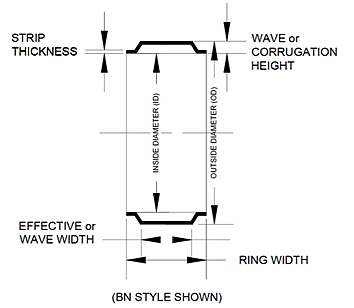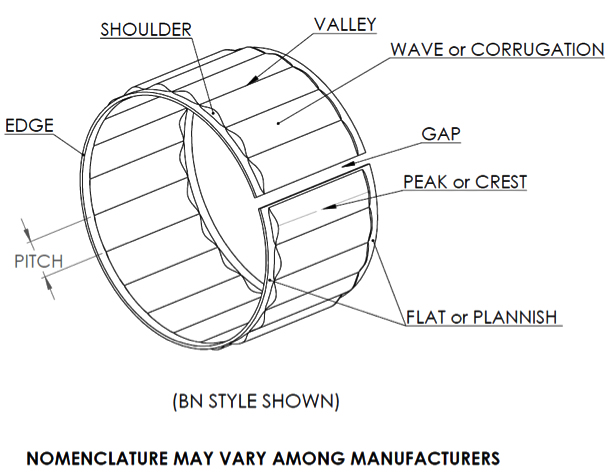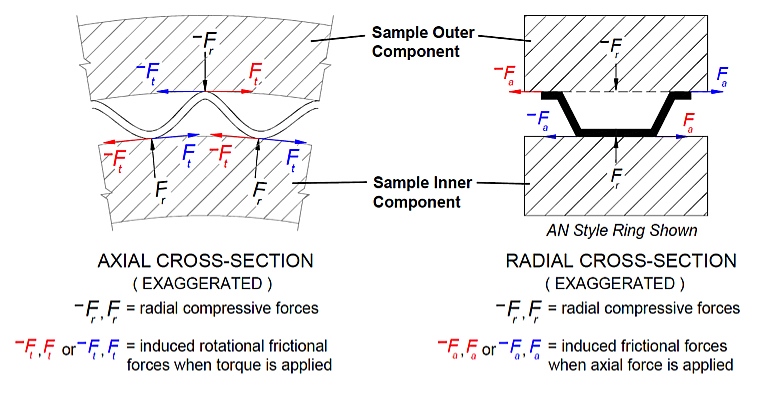What is a Tolerance Ring?
Tolerance Rings are highly engineered frictional fasteners used to effectively join mating cylindrical parts. Manufactured from high quality spring steel or stainless steel strip, Tolerance Rings are widely accepted as fastening devices capable of handling torque transfer, axial retention and radial loading between mating and/or parts.
Technical and economical advantages ensured by use of Tolerance Rings include:
Rapid, low cost of assembly
Wider dimensional tolerance of mating diameters for interference fits compensation for Δ thermal expansion between mating materials
Elimination of keys, pins, adhesives, D-shafts, threads and splines
Compensation for small amounts of misalignment of up to 1/2° draft angle
Infinite rotational indexing of parts prior to assembly
Modification to spring rates/critical frequencies of assemblies


Basic principal of the Tolerance Ring
The Tolerance Ring is made from a thin spring steel strip of material into which waves, corrugations, or bumps are formed. The strips are cut to length and curled into the ring shape. The waves are either facing inward or outward to accommodate different applications. The AN style, waves facing inward, is designed so that the ends can be closed and fitted into a bore or tube and is self-retaining when released. The BN style, waves facing outward, is designed so that when the ends are opened it will slip over a shaft and also be self-retaining when released.
The waveforms of a tolerance ring are designed to exert a holding force yet allow for ease of assembly between mating components. When the Tolerance Ring is assembled between mating components, each wave is elastically deflect- ed, resulting in holding force. The holding ability of the ring is the resultant force of all the waves and the coefficient of friction with the mating components.
E= Modulus of Elasticity or Young’s Modulus, typically 28×106 psi for 301 stainless steel t = strip or raw material thickness
p = pitch, distance between waves
w = effective or wave width
k ≈ 4.8Ew(t/p)3 = simplified theoretical spring constant of a single wave or corrugation, “little k”
Δh= amount of wave compression
N = number of waves or corrugations on entire perimeter
Fr = Δhk = radial spring force exerted by a single wave or corrugation
FR = ∑Fr = ΔhNk = total radial circumferential load
µr = ∑Fa = µsFR = µs ∑Fr = peak axial retention force or maximum pull-out force

